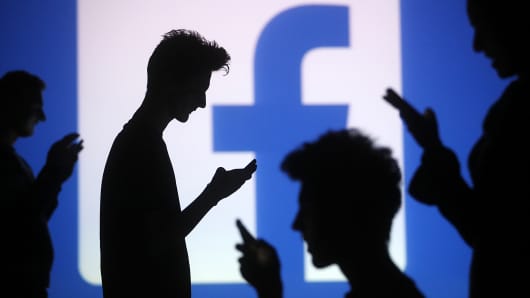QUEZON City, Philippines (June 13) – Interpersonal communication is constantly evolving. As schedules grow more hectic, many interpersonal interactions are now done with the use of social media. Although face-to-face interactions will never really go away, social media has greatly affected how we communicate, share and connect.
In the age of technology, one is no longer required to be in the same room or even in the same country with the person they are talking to. Our methods of communication and interaction adapt as the choices for communication become more diverse and convenient. Online social media sites such as Facebook, Twitter, and Instagram have grown in popularity in the past few years as they provide us an easy and convenient way to communicate with each other wherever we are in the world.

Facebook, in particular is not only the most prevalent but also the most preferred form of communication for many students and young adults today. As of April 2016, Facebook was the most popular social networking site in the world, based on the number of active user accounts—more than 1.94 billion monthly active users as of March 2017. Facebook is a social networking site which allow users to post comments, share photographs and links to news or other interesting content on the Web, play games, chat live, and even stream live video. Shared content can be made publicly accessible, or it can be shared only among a selected group of friends or family, or with a single person.
Nowadays, when you look around you, you’ll notice people with their heads bowed down, hands busy tapping on their phones. Instead of talking to their friends who are right there with them, they prefer to do online activities with their other friends. Ironically, social media – the supposed great enabler of interpersonal communication – is actually causing its demise.

People, mostly young adults, are now too attached to their smartphones posting, tweeting or texting to the point where they no longer want to engage or interact with the people around them. What is more surprising is the fact that such stuff is now considered acceptable, when good manners once dictated that if you are with others, you should refrain from taking out your gadgets. Today, family members sit at the same table but look at their phones instead of talking to each other. Even couples spend their dates looking at their phones.

Admittedly, the advent of Facebook and the like gave us lots of good things—It allowed us to stay in touch with friends and family, keeping us updated with what is happening around the world and others. But social media also brought some bad things like cyber-bullying, easier access to inappropriate content and others.

At the end of the day, nothing can replace face-to-face interactions or interpersonal communication. Personal exchanges and in-depth conversations just have that ineffable quality, they are more real, more sincere, more heartfelt.
Only when we talk with each other directly do we feel what the others feel. After all, much of our communication is done in the subconscious level, with facial expressions, tone of voice and body language playing important parts. As such, to avoid misunderstandings, it is really important to actually engage with the one you are communicating with. After all, emojis may be cute but, let’s admit it, they don’t properly convey what the person wants to say.
Face-to-face interaction should not be replaced with virtual communication. The feelings that were felt and shared by making memories personally with the people who are dear to you as well as having once-in-a-life-time experiences with them, even with modern technology, those feelings can’t be e-mailed or posted on Facebook.

Source: https://en.wikipedia.org/wiki/Facebook
(written by Arlyn Dungao, edited by Jay Paul Carlos, additional research by Vince Alvin Villarin)








